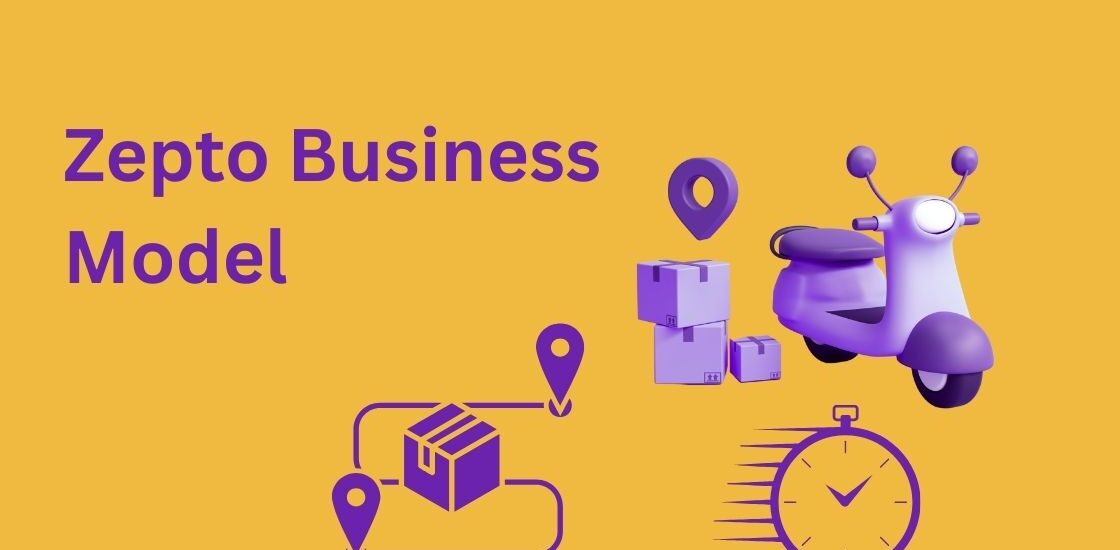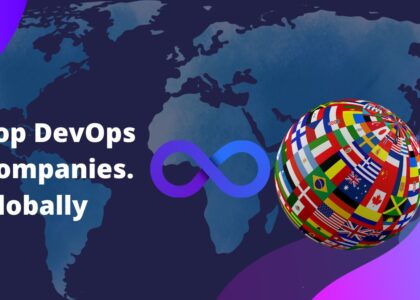1. Zepto’s Story – From Idea to Industry Disruptor
Zepto Business Model In the summer of 2021, two teenagers—Aadit Palicha and Kaivalya Vohra—left Stanford University in the United States before completing their degrees. The reason? They believed India’s grocery delivery market was on the verge of a transformation and they wanted to be the ones driving it.
The duo had already experimented with KiranaKart, a delivery service aimed at helping local grocery stores fulfil online orders. But they quickly realised that the traditional kirana model was limited—delivery times were slow, product availability was unpredictable, and customer experience varied from store to store.
That’s when they came up with the idea for Zepto—a hyperlocal quick-commerce platform where speed, reliability, and product quality were completely under the company’s control.
From day one, the brand’s promise was bold: deliver groceries and everyday essentials in under 10 minutes. While many dismissed this as a marketing gimmick, Zepto’s operational model proved it was possible—and scalable.
Today, Zepto is not just another delivery app. It’s a full-fledged retail and technology company that is redefining convenience for millions of urban Indians.
2. The Core Engine – Dark Stores & the 10-Minute Promise
The magic of Zepto lies in its dark store network.
Dark stores are essentially mini-warehouses dedicated solely to fulfilling online orders. Unlike traditional supermarkets, they’re not open to walk-in customers. Instead, they are optimised for speed of picking and dispatch.
Size & Structure
-
Area: Typically 1,500 to 2,500 sq ft.
-
Inventory: Around 2,000–3,000 products, carefully selected based on local buying patterns.
-
Layout: Products are arranged scientifically so pickers can collect items in the shortest possible time—usually under 60 seconds.
Location Strategy
Each dark store is strategically placed within 2–4 kilometres of the customer clusters it serves. This means a delivery partner rarely travels more than a few minutes to reach a destination, keeping delivery times consistently under 10 minutes.
Efficiency in Action
Here’s how a typical Zepto order works:
-
Customer places an order via the app.
-
Store receives the order instantly—pickers get a digital picking list on their devices.
-
Items are collected in less than a minute.
-
Order is packed and handed over to the delivery rider.
-
Rider delivers using the fastest route, aided by real-time traffic and location data.
By controlling every stage—from procurement to doorstep—Zepto ensures not only speed but also product quality and freshness, something traditional aggregator models often struggle with.
3. Technology – The Invisible Workforce
While Zepto’s speed might make it seem like magic, it’s actually the result of deep technology integration across its operations.
Smart Inventory & Demand Prediction
Zepto uses AI and machine learning to forecast what customers in a specific area are likely to order. These predictions aren’t guesswork—they’re based on:
-
Past purchase history
-
Seasonal demand (e.g., mango season, festival sweets)
-
Local events (e.g., cricket matches, public holidays)
-
Weather patterns (e.g., stocking hot beverages during cold spells)
This means each dark store always has the right mix of products, minimising stockouts and wastage.
Pick-Pack-Bag (PPB) Optimisation
The picking process is streamlined to the point where store staff can find and pack all items in under 60 seconds. This is achieved by:
-
Grouping high-demand products in easily accessible zones
-
Using digital picking guides that suggest the shortest walking route
-
Standardising packaging for faster handling
Route Optimisation for Riders
Zepto’s delivery partners are guided by AI-driven maps that consider:
-
Real-time traffic conditions
-
Road closures or diversions
-
Weather delays
-
Rider availability and location
This ensures every rider is assigned the most efficient delivery route possible.
Centralised Monitoring
At Zepto’s control centres, managers can see:
-
How long each order takes to pick, pack, and dispatch
-
Rider performance metrics
-
Inventory status across all dark stores
-
Customer feedback trends
This data-driven oversight allows quick decision-making and continuous improvement.
4. How Zepto Makes Money – Beyond Just Groceries
While many see Zepto as “the 10-minute grocery app,” the company’s revenue strategy is far more layered.
1. Direct Product Sales
Zepto buys products in bulk from suppliers and sells them through its platform, earning a profit margin on each sale. Controlling inventory allows them to negotiate better supplier rates and manage product pricing.
2. Delivery Charges
While most orders are free to deliver above a certain value, Zepto charges a small fee for low-value or peak-time deliveries. These fees add up significantly given the high volume of daily orders.
3. Zepto Pass – Subscription Revenue
Zepto Pass is the company’s membership program, offering:
-
Unlimited free deliveries
-
Priority fulfilment
-
Exclusive discounts
Subscribers pay a monthly or yearly fee, giving Zepto a steady stream of recurring revenue while increasing customer loyalty.
4. Brand Promotions & Advertising
Brands can pay to have their products featured at the top of search results, promoted in banners, or bundled into offers. This is similar to advertising on e-commerce marketplaces like Amazon.
5. Private Label Products
Zepto has been introducing its own branded products in categories like snacks, cleaning supplies, and packaged foods. Private labels offer higher profit margins and brand control.
6. Data Analytics Services
Zepto leverages its huge database of purchase patterns to offer insights to FMCG companies. These insights help brands understand local demand trends, product preferences, and pricing strategies.
5. Market Positioning – Zepto vs Competitors
Zepto operates in a competitive quick-commerce space, alongside major players like Blinkit (Zomato-owned), Swiggy Instamart, and BigBasket Now.
-
Speed as a Differentiator: While most competitors offer 15–30 minute delivery, Zepto built its brand entirely around the 10-minute promise.
-
Inventory Control: Unlike aggregator models that rely on third-party stores, Zepto runs its own inventory network, ensuring better margins and product consistency.
-
Technology Depth: Its tech-first approach has allowed faster scale-up and better route planning compared to rivals relying more on human-led logistics.
6. Growth & Funding Journey
In just a few years, Zepto has secured over a billion dollars in funding from top-tier investors. This financial backing has allowed:
-
Expansion into multiple metro cities
-
Scaling dark stores into the hundreds
-
Heavy investment in AI-driven logistics systems
-
Hiring talent across engineering, operations, and marketing
With plans to enter more tier-2 and tier-3 cities, Zepto is positioning itself for nationwide dominance. The company is also preparing for a potential IPO within the next couple of years.
7. Challenges Ahead – The Reality Check
While Zepto’s model is impressive, quick commerce is not without its problems.
Profitability Pressure
Fast deliveries require:
-
More dark stores
-
More riders
-
Higher operational costs
Convincing customers to pay higher delivery charges or subscription fees remains a challenge.
Regulatory Scrutiny
Quick-commerce companies are under watch for:
-
Fair pricing practices
-
Rider working conditions
-
Impact on small local retailers
Operational Complexity
Managing hundreds of micro-warehouses and thousands of riders while keeping delivery times under 10 minutes is a massive logistical challenge.
8. Zepto’s Strategic Blueprint – Why It Works
If we were to summarise Zepto’s success formula, it would look like this:
-
Dark Store Network – Bringing inventory closer to customers.
-
Tech-First Approach – Using AI to make every step faster and smarter.
-
Diversified Revenue Streams – Reducing dependency on product margins.
-
Aggressive Scaling – Capturing market share before rivals can catch up.
-
Customer-Centric Promise – Building loyalty on speed, reliability, and convenience.
9. The Future of Zepto – What’s Next?
Zepto’s roadmap hints at:
-
Expanding product categories beyond groceries into electronics, beauty, and medicines.
-
Enhancing private labels for higher profitability.
-
Using predictive AI to start deliveries even before the customer completes checkout (anticipatory shipping).
-
Investing in sustainability, such as electric delivery fleets and eco-friendly packaging.
If executed well, Zepto could evolve from a grocery delivery startup into a full-scale instant retail platform.
Final Thoughts
Zepto’s rise is a testament to what’s possible when speed, technology, and strategic execution come together. In a market where convenience is king, it has built a loyal customer base and disrupted traditional shopping habits.
However, the quick-commerce space is a high-stakes game. Profitability, regulatory compliance, and operational scalability will decide whether Zepto becomes a long-term leader or a cautionary tale.
For now, it remains one of the most fascinating business models in India’s startup ecosystem—fast, data-driven, and laser-focused on redefining how we shop.






